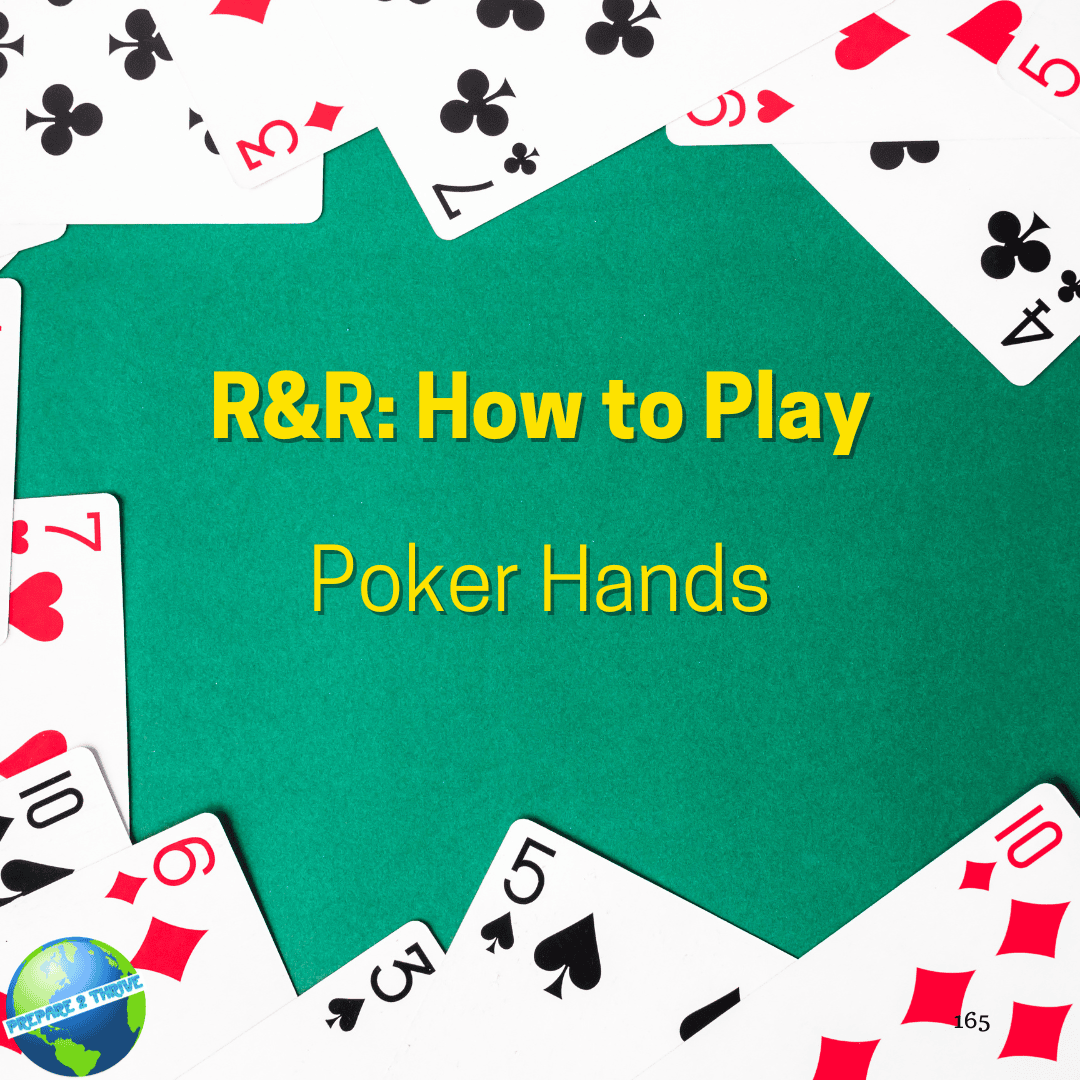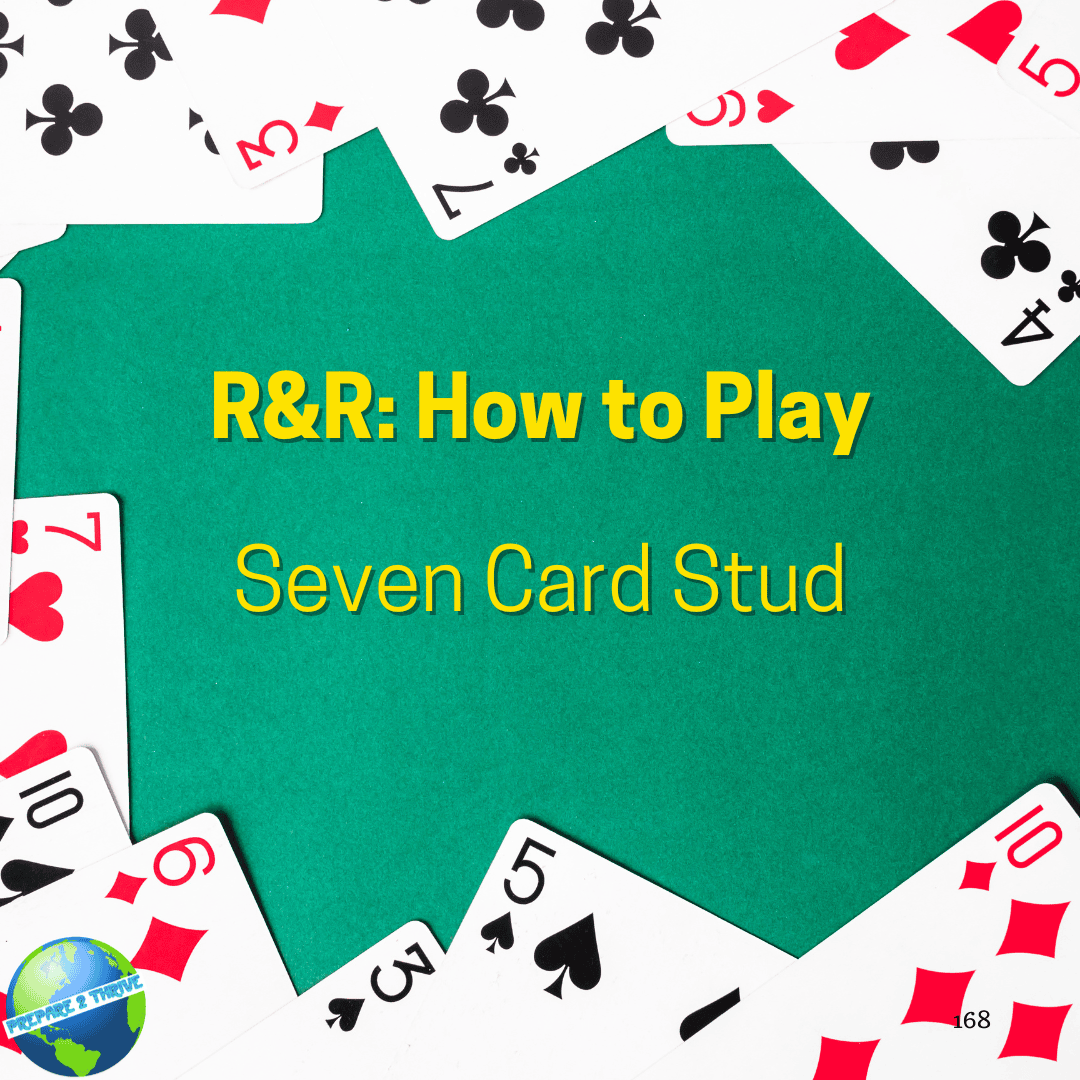Seven Card Stud is a classic poker variation played with up to 8 players. The objective is to win chips or money by having the best hand at showdown.
Setup for Seven Card Stud:
- Use a standard 52-card deck for Seven Card Stud.
- Assign a dealer button that rotates clockwise after each hand.
- Players post an ante (a small forced bet) to create an initial pot.
Objective for Seven Card Stud:
- The goal is to win chips or money by having the best hand at showdown.
Round Play for Seven Card Stud:
- The game is played in a series of hands, and each hand consists of several steps.
- Players are dealt three cards: two face down (hole cards) and one face up (door card).
- The player with the lowest-ranked door card (the exposed card) starts the action with a "bring-in" bet, which is usually a fraction of the lower betting limit.
- Players take turns in a clockwise direction, with several betting rounds:
- Fourth Street: Each player receives another face-up card. The player with the highest-ranked pair or combination of door cards starts the betting.
- Fifth Street: Players receive a fifth face-up card. The player with the highest-ranked combination of door and upcards starts the betting.
- Sixth Street: Players receive a sixth face-up card. The player with the highest-ranked combination of door and upcards starts the betting.
- Seventh Street (also known as the "River" or "Downcard"): Players receive a seventh card, but this one is dealt face down (the "downcard"). The player with the highest-ranked combination of door and upcards starts the final round of betting.
- In all betting rounds, players can check, bet, raise, or fold. The betting structure may use fixed limits, pot limits, or no limits.
- After the final betting round, the game proceeds to the showdown.
- Players reveal their hole cards and their best five-card hand, using any combination of their seven cards. The player with the best hand, according to standard poker hand rankings, wins the pot. If there's a tie, the pot is split between the tied players.
Winning:
- The player who accumulates the most chips or money over the course of the game or meets a specific win condition (like eliminating all opponents) is the winner.
Tips:
- Seven Card Stud requires a strong memory and attention to detail, as you need to keep track of which cards have been revealed and which remain unknown.
- Pay attention to your own door cards and those of your opponents to make informed betting decisions.
- Skilled hand selection and recognizing the strength of your hand at each street is key to success in Seven Card Stud.
Seven Card Stud is a classic and challenging poker variation that rewards strategy, observation, and strong decision-making. It is suitable for players who enjoy a slower-paced and more structured form of poker.

Poker Hands
Poker hands are ranked based on the combination of cards a player holds. Here are the standard poker hand rankings from the highest to the lowest:
-
Royal Flush:
- A, K, Q, J, 10, all of the same suit.
- The highest-ranking hand, unbeatable in standard poker.
-
Straight Flush:
- Five consecutive cards of the same suit.
- For example, 9, 8, 7, 6, 5 of Hearts.
-
Four of a Kind (Quads):
- Four cards of the same rank.
- For example, four Kings and any other card.
-
Full House:
- Three cards of one rank and two cards of another rank.
- For example, three Jacks and two Fives.
-
Flush:
- Five cards of the same suit, not in consecutive order.
- For example, 10, 7, 6, 4, 2, all of Diamonds.
-
Straight:
- Five consecutive cards of different suits.
- For example, 9, 8, 7, 6, 5 of mixed suits.
-
Three of a Kind (Trips or Set):
- Three cards of the same rank.
- For example, three Queens and two unrelated cards.
-
Two Pair:
- Two sets of pairs.
- For example, two Kings, two Nines, and an unrelated card.
-
One Pair:
- Two cards of the same rank.
- For example, two Tens and three unrelated cards.
-
High Card:
- The highest card in your hand when no other hand is made.
- If no player has a pair or better, the highest card(s) in your hand determine the winner.
The player with the highest-ranking hand wins the pot. If two or more players have the same hand (e.g., both have a pair of Aces), the winner is determined by the kicker (the highest unpaired card) and, if necessary, the second kicker.
It's essential to understand the poker hand rankings, as they form the basis for evaluating the strength of your hand and making betting decisions. Keep in mind that some poker variations may have unique hand rankings or special rules, so it's important to be aware of the specific rules of the game you are playing.
